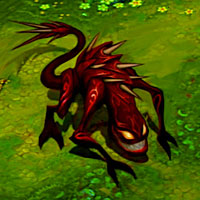What makes good video games? Even the most amateurish of gamers will list these ingredients as crucial to a great game ‘recipe’:
- an easy-to-maneuver user interface,
- an innovative storyline
- stunning sound effects.
But the most important element, the one that attracts gamers upfront, is the design. Conceptualising characters, adjusting skill levels, and ensuring that the finish will dazzle and impress players is where game designers come into play.
And as far as Riot Games and League of Legends (LoL) design director Tom Cadwell knows, the difference between a blockbuster hit and a forgettable dud boils down one word: Decisions.

Photo taken from MMO Culture
Behaviour – the biggest bane of designers
“There’s a lot of examples of really well-executed games, but despite all that, you see tons of really bad outcomes and decisions in games,” lamented Cadwell, who in his late-20s. He is also known in his industry as ‘Zileas’, his personal gaming moniker that he adopted ever since he starting gaming
As part of a 2-day visit to Singapore, the Californian, who has 12 years of experience in game development, was giving a talk to members of the press at the Game Solution Centre at Ayer Rajah Crescent.
There, he identified the 3 biggest pitfalls for game designers:
- hasty development processes
- emotions
- unnecessary constraints
And Cadwell had a straightforward analogy to explain how haste can impede good decisions.
“If I say to the best designer in the planet, “Make me a great game in 2 days”, it’s just not going happen. If, from the outset, you set the process wrong, some things are impossible.”
But what struck his audience most was this stern reminder – “Designers are human.”
Highlighting the fact that they were ultimately vulnerable to emotions and social motivations, Cadwell said that a reluctance to give bad feedback or let go of existing work were common flaws plaguing designers.
But what stops designers from criticising the standard of others’ work? “Because [doing so] may put a strain on relationships.”
Allowing such stubborn attitudes does, unfortunately, lead to substandard ideas being accepted.
Cadwell finally touched on the final problem of unnecessary, self-imposed constraints.
Posing this question to the audience, he asked them, “What happens when you have an idea… And that you know it’s probably not worth the effort, but yet it’s too awesome to do away with. What do you do?”
Cadwell said this dilemma often causes designers to lose objectivity, when effort and time is invested into ideas that would be of no added value to the game.
Thankfully, he had this solution, “Always remember to have a structured process where people reviewing your ideas are independent parties. They mustn’t have had prior interest in your concept. That way, they will acknowledge the potential risks of building on that concept early, preventing you from wasting precious time.”
The one misstep – Omen
One fable that Cadwell has repeated to countless fans is that of the unreleased character Omen from the action real-time strategy game League of Legends (LoL).
“Nobody thought it was great,” he said of the quadruped, demon-like creature with a spiked tail and a wicked grin.
A journalist at the conference concurred with the former Starcraft expert, panning Omen as being too generic.
Another pointed out that the ambiguity of its looks made gamers wonder what inherent abilities the character had.
So how did this unappealing figment of a designer’s imagination spend 3 months on the drawing board before finally being scrapped?
“We didn’t define what ‘really good’ was… We’d keep asking decision makers, ‘We’re making Omen… That’s cool, right?’” Cadwell explained.
What kept Omen’s concept alive for an undeservingly long period of time was the nonchalant “Oh yeah, sure, you can carry on,” from the decision makers and design executives.
“Maybe you can make it more ferocious” and “maybe you could make it more clearly arranged… with more personality” were some of the half-hearted suggestions offered.
“If we instead just asked the team leaders, ‘Which of you guys thinks this character would be a 10?’, none of them would have agreed,” Cadwell said.
This episode was a painful lesson for Cadwell and his team, whose production pipeline was disrupted when Omen, with 50% of its development completed, eventually made way for the sword-wielding Riven.
But Cadwell insists that introducing Riven was ‘the best decision made’.
Such is the importance of speaking up – it spurs decision makers to tell creators the harsh, but necessary, truth that their concepts don’t make the cut.
The ‘Holy Grail’ of good decisions – crappy first drafts
Cadwell, who earned a Master of Business Administration from the renowned Kellogg School of Management in Illinois, revealed a simple trick designers can adopt as part of the improvement process.
This is the ‘crappy first draft’, a sloppy sketch or storyboard of the concept that designers want to present.
“With this, [executives] get the message that the first revision is [meant to be] bad, so it gives opportunity to celebrate once it’s not bad,” he chuckled.
This helps to lower expectations, making designers more willing to share what’s on their minds, which in turn allows more breathing space for an idea to grow.
Speaking to UrbanWire in private, Cadwell mentioned an idea a fellow designer came up with – a cyborg war shark equipped with laser-shooting abilities.
“Whenever you run out of ideas, remember the laser-shooting shark. Something so simple can still be cool,” said Cadwell, referring to graphic artist Jesse McGibs’ work.
“This,” he said of the creation by the maker of web-comic series Phoenix Epoch, “has the potential for a 95+ Metacritic score,” telling of how the concept of the war shark could warrant top online game review honours if it was included in a game.



